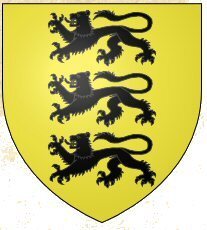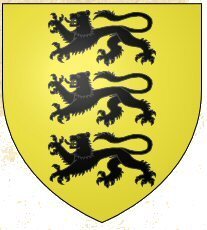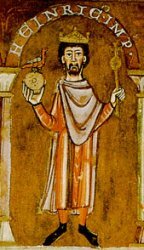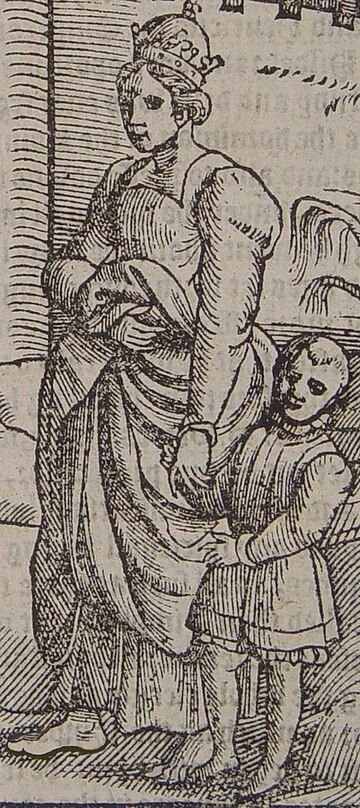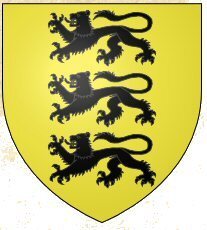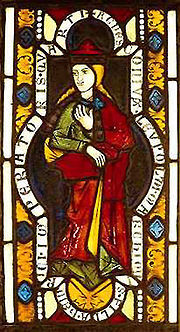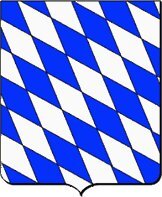maximum test » Frederick ""of Hohenstauffen"" de Hohenstaufen (1090-1147)
Persönliche Daten Frederick ""of Hohenstauffen"" de Hohenstaufen
- Alternative Name: Friedrich "One Eye" von Hohenstauffen
- Spitzname ist "of Hohenstauffen".
- Er wurde geboren im Jahr 1090 in Hohenstaufen, Swaben, Bavaria.
- Er wurde getauft in Duitsland.
- Fetauft (im Alter von 8 Jahren oder später) von der Priestertumsvollmacht der HLT-Kirche in COMPLETED.
- Berufe:
- unknown in Duke of Swabia.
- Hertig av Schwaben.
- Duc, de Souabe.
- Duque de Swabia.
- Wohnhaft: Hohenstauffen.
- Er ist verstorben am 6. April 1147, er war 57 Jahre altAlzey
Rheinland-Pfalz Deutschland. - Er wurde beerdigt in St. Walpurgia. Alsace ®64.
- Ein Kind von Frederick de Hohenstaufen und Agnes
- Diese Information wurde zuletzt aktualisiert am 6. August 2019.
Familie von Frederick ""of Hohenstauffen"" de Hohenstaufen
(1) Er ist verheiratet mit Agnes.
Sie haben geheiratet zwischen 1132 und 1133, er war 42 Jahre alt.
Kind(er):
(2) Er ist verheiratet mit Judith de Welfos.
Sie haben geheiratet zwischen 1119 und 1121 in Hohenstaufen, Goppingen, Baden-Wuerttemberg, Duitsland, er war 29 Jahre alt.
Kind(er):
Notizen bei Frederick ""of Hohenstauffen"" de Hohenstaufen
He was the elder brother of the future Emperor, Conrad III, Duke of
Franconia.
Frederick II, Duke of Swabia
From Wikipedia, the free encyclopedia
Frederick II (1090 – 6 April 1147), called the One-Eyed, "of Hohenstauffen" was duke of Swabia. He was the eldest son of Frederick I, Duke of Swabia, and Agnes of Duitsland.
He succeeded his father in 1105. In 1121 he married Judith of Bavaria, a member of the powerful House of Guelph.
On the death of Emperor Henry V, his uncle, Frederick stood for election as King of the Romans with the support of his younger brother Conrad, duke of Franconia and several houses. However, he lost this election of 1125 to Lothar II, crowned Emperor later in 1133.
A conflict erupted between Frederick and his supporters, and Lothar. Encouraged by Albert, Archbishop of Mainz, who loathed the supporters of the late Emperor Henry V, Lothar besieged Nuremberg in 1127. Frederick relieved the siege of Nuremberg in 1127 and occupied Speyer in 1128. The attempt of Henry the Proud, duke of Bavaria, to capture Frederick during negotiations failed (1129). However, afterwards supporters of Lothar won a number of victories both in Duitsland and in Italy. Speyer (1129), Nuremberg (1130) and Ulm (1134) were captured and in October 1134 Frederick submitted to the emperor. In 1135 both Frederick and Conrad were finally reconciled with Lothar. After Lothar's death (1137) and election of Conrad as King of the Romans (1138) Frederick supported his brother in the struggle with Guelphs.
Frederick's second wife, Agnes, was the niece of his old enemy Albert of Mainz.
According to Otto of Freising, Frederick was "so faithful a knight to his sovereign and so helpful a friend to his uncle that by valor he supported the tottering honor of the realm, fighting manfully against its foes..."
[edit] Family
Frederick's descendants were:
from Judith of Bavaria (d. 1130 or 1131), daughter of Henry IX, Duke of Bavaria
Frederick III Barbarossa (1122-1190), duke of Swabia and Holy Roman Emperor as Frederick I
Berthe of Hohenstaufen (1123-1195), married Matthias I, Duke of Lorraine
from Agnes of Saarbrücken (d.~1147)
Conrad of Hohenstaufen (also called Konrad) (1134/1136-1195), Count Palatine of the Rhine
Judith of Hohenstaufen (1135-1191), married Louis II, Landgrave of Thuringia
[edit] Sources
Otto of Freising
Ancestral Roots of Certain American Colonists Who Came to America Before 1700 by Frederick Lewis Weis, Lines: 45-25, 166-25
See also: Dukes of Swabia family tree
[edit] External links
Genealogy
Preceded by
Frederick I Duke of Swabia
1105–1147 Succeeded by
Frederick III Barbarossa
He was the elder brother of the future Emperor, Conrad III, Duke of
Franconia.
He was the elder brother of the future Emperor, Conrad III, Duke of
Franconia.
He was the elder brother of the future Emperor, Conrad III, Duke of
Franconia.
[alfred_descendants10gen_fromrootsweb_bartont.FTW]
of Hohenstauffen, Duke of Swabia; m. JUDITH of Baveria. (Weis 45-25).
From Wikipedia, the free encyclopedia.
Frederick II of Hohenstaufen (1090 – 1147) was duke of Swabia,succeeding his father, duke Frederick I in 1105. In 1121 marriedJudith of Bavaria, a member of the powerful House of Guelph.
On the death of Emperor Henry V, his uncle, Frederick stood forelection as King of Duitsland with the support his younger brotherConrad of Swabia and several houses. However, he lost this election of1125 to Lothar II, crowned Emperor later in 1133.
Frederick's descendents were:
From Judith of Bavaria (1100-1132)
Frederick III Barbarrossa (1122-1190), duke of Swabia and Holy RomanEmperor as Frederick I
Bertha of Hohenstaufen (1123-1195), married Matthias I, Duke ofLorraine
From Agnes of Saarbrücken (d.~1147)
Conrad of Hohenstaufen, Palatine Count of the Rhein (1134-1195)
Judith of Hohenstaufen (1135-1191), married Ludwig II, Duke ofThuringia
Frederick II of Hohenstaufen (1090 - 1147) was duke of Swabia, succeed ing his father, duke Frederick I in 1105. In 1121 he married Judith o f Bavaria, a member of the powerful House of Guelph. On the death ofE mperor Henry V, his uncle, Frederick stood for election as King of Ger many with the support of his younger brother Conrad of Swabia and seve ral houses. However, he lost this election of 1125 to Lothar II, crown ed Emperor later in 1133.
A conflict erupted between Frederick and his supporters, and Lothar. E ncouraged by Albert, Archbishop of Mainz, who loathed the supporters o f the late Emperor Henry V, Lothar besieged Nuremberg in 1127. Frederi ck's second wife, Agnes, was the niece of his old enemy Albert of Main z. According to Otto of Freising, Frederick was "so faithful a knightt o his sovereign and so helpful a friend to his uncle that by valor he supported the tottering honor of the realm, fighting manfully against its foes..." Frederick's descendants were:
With Judith of Bavaria (1100-1132): Frederick III Barbarossa (1122-119 0), duke of Swabia and Holy Roman Emperor as Frederick I and Judith o f Hohenstaufen (1123-1195), married Matthias I, Duke of Lorraine.
With Agnes of Saarbrücken (d.~1147): Conrad of Hohenstaufen, Count Pal atine of the Rhine (1134-1195)
Clarissa of Hohenstaufen (1135-1191), married Ludwig II, Duke of Thuri ngia
{geni:about_me} - http://www.friesian.com/francia.htm#swabia
-----------
- https://en.wikipedia.org/wiki/Frederick_II,_Duke_of_Swabia
Frederick II (1090 – 6 April 1147), called the One-Eyed, was Duke of Swabia from 1105 until his death, the second from the Hohenstaufen dynasty. His younger brother Conrad was elected King of the Romans in 1138.
Life
Frederick II was the eldest son of Duke Frederick I of Swabia and his wife Agnes of Waiblingen, a daughter of the Salian emperor Henry IV. He succeeded his father in 1105 and together with his brother Conrad continued the extension and consolidation of the Hohenstaufen estates. Frederick had numerous castles erected along the Rhine river and in the Alsace region.
The Hohenstaufen brothers supported King Henry V in the conflict with his father Emperor Henry IV; Frederick also accompanied him on his campaign against King Coloman of Hungary in 1108. In 1110 he and Henry V embarked on an expedition to Italy, where in Rome Henry enforced his coronation by Pope Paschal II. In turn, the emperor appointed Conrad Duke of Franconia and both brothers German regents when he left for his second Italian campaign in 1116. On the other hand, the rise of the Hohenstaufens began to upset rivalling princes like Archbishop Adalbert of Mainz, who loathed the supporters of Henry V.[citation needed]
About 1120 Frederick married Judith, a daughter of Duke Henry IX of Bavaria and member of the powerful House of Welf. Their first son Frederick was born in 1122.
Upon the death of Emperor Henry V in 1125, the Salian dynasty became extinct. Frederick II, Henry's nephew, stood for election as King of the Romans with the support of his younger brother Conrad and several princely houses. However, he lost in the tumultuous round of elections,[citation needed] led by Archbishop Adalbert of Mainz, to the Saxon duke Lothair II. Frederick at first rendered homage to the new king, however, he refused the feudal oath and insisted on the inheritance of the Salian family estates along the Middle Rhine.
At the 1125 Hoftag diet in Regensburg, the king officially requested the surrender of the Salian possessions. After he imposed an Imperial ban on the Hohenstaufens, the conflict erupted between Frederick and his supporters, and Lothair: encouraged by Archbishop Adalbert and several princes, the king occupied Hohenstaufen lands in Upper Lorraine and Alsace. However, an attack by Welf forces on the Swabian core territory failed, like the siege of Nuremberg by Lothair in 1127. Frederick relieved the siege and moreover gained the support from his brother Conrad, who had just returned from a pilgrimage to the Holy Land. During the fighting, Frederick lost an eye, whereafter he was no longer eligible as German king.[citation needed]
In December 1127 Conrad declared himself King of the Romans, while the next year Duke Frederick II occupied the Salian city of Speyer. The attempt of Duke Henry X of Bavaria to capture his brother-in-law Frederick during the negotiations failed. However, afterwards the supporters of Lothair won a number of victories both in Duitsland and in Italy. Speyer (1129), Nuremberg (1130) and Ulm (1134) were captured; moreover Frederick's consort Judith of Bavaria died in 1130. His second wife, Agnes of Saarbrücken, was a niece of his old enemy Adalbert of Mainz; Frederick married her about 1132.
After Lothair was crowned emperor in 1133, Frederick saw himself stuck between the Saxon and Bavarian forces. He eventually submitted to him in the spring of 1135 at Bamberg. Both were finally reconciled and Emperor Lothair renounced further attacks against the Hohenstaufens. After Lothair's death in 1137 and the following election of Conrad as King of the Romans, Frederick supported his brother in the struggle with the Welfs. According to Otto of Freising, Frederick was "so faithful a knight to his sovereign and so helpful a friend to his uncle that by valor he supported the tottering honor of the realm, fighting manfully against its foes..."
Duke Frederick II died in 1147 at Alzey. He was buried at the Benedictine abbey of Walburg in Alsace. His son Frederick succeeded him as Swabian duke and was elected German king (as Frederick Barbarossa) in 1152.
Marriage and children
With Judith of Bavaria (1103- 22 February 1131), daughter of Henry IX, Duke of Bavaria:[1]
*Frederick III Barbarossa (1122–1190), duke of Swabia and Holy Roman Emperor as Frederick I[1]
*Bertha of Lorraine (1123–1195), married Matthias I, Duke of Lorraine
With Agnes of Saarbrücken (d. c. 1147), daughter of Frederick, Count of Saarbrücken:
*Conrad of Hohenstaufen (also spelled Konrad) (1134/1136-1195), Count Palatine of the Rhine
*Jutta (1135–1191), married Louis II, Landgrave of Thuringia
------------------
- http://fmg.ac/Projects/MedLands/SWABIA.htm#FriedrichStaufendied1147A
3. FRIEDRICH von Staufen (1090-Alzey 4 or 6 Apr 1147, bur Walburg Abbey). The Tabula consanguinitatis Friderici I regis et Adelæ reginæ (which provided the basis for their divorce) names "ducem Fridericum", father of "regem Fridericum", as son of "ducem Fridericum, qui Stophen condidit" and "filia regis Heinrici"[276]. He succeeded his father as FRIEDRICH II "der Einäugige" Duke of Swabia in 1105. Regent of Duitsland 1116. His maternal uncle Emperor Heinrich V considered him as his successor and bequeathed him the Salian dynasty's family properties to increase his personal prestige[277], but on the Emperor's death in 1125 Friedrich was passed over as candidate for the German throne in favour of Lothar von Süpplingenburg Duke of Saxony whom the German nobility saw as less of a dynastic threat. After refusing to hand over his inherited crown lands to the new king, Duke Friedrich was outlawed[278]. Friedrich eventually submitted to Emperor Lothar in 1135 with his brother. He agreed to transfer the crown lands, but was allowed to remain as Duke of Swabia[279]. "Dux Fridericus…" witnessed a charter dated 25 Jul 1139 under which Adalbert [II] Archbishop of Mainz confirmed his predecessor's grants to Kloster Jechaburg[280]. The Gesta Friderici of Otto of Freising records the death of Duke Friedrich and his burial "in monasterio sanctæ Waltpurge…in terminis Alsatiæ sito"[281]. The Necrology of Zwiefalten records the death "VIII Id Apr" of "Fridericus dux de Stouphin"[282].
'''m''' firstly ([1119/21]) JUDITH of Bavaria, daughter of HEINRICH "dem Schwarzen" Duke of Bavaria [Welf] & his wife Wulfhild of Saxony [Billung] (after 1100-22 Feb [1130/31], bur Walburg im Heiligen Forst, Alsace). The Historia Welforum names (in order) "Iuditham, Sophiam, Mahtildem, Wulfildem" as the four daughters of "Heinricus dux ex Wulfilde", specifying that Judith married "Friderico Suevorum duci"[283]. The Annalista Saxo names "Heinricum inclitum ducem Saxonie et Bawarie et Welfonem et quatuor filias" as children of Duke Heinrich and his wife Wulfhild, specifying that one of the daughters (mentioned first in the list of daughters, but not named) married "Fridericus dux Suevorum"[284].
'''m''' secondly ([1132/33]) AGNES von Saarbrücken, daughter of FRIEDRICH I von Saarbrücken Graf im Saargau & his wife Gisela --- (-after 1147). The Urspergensium Chronicon refers to the second wife of "Friedrich I pater ipsius" as "de genere comitum…Zwainbrug et de Sarbrug"[285]. The Gesta Friderici of Otto of Freising records the marriage of "Fridericus dux, mortua uxore sua Iuditha" and "Friderici comitis de Sarbruch, fratris Alberti episcopi, filiam Agnetem"[286].
Duke Friedrich II & his first wife had two children:
Duke Friedrich II & his second wife had three children:
---------------
- http://de.wikipedia.org/wiki/Friedrich_II._(Schwaben)_
Nachkommen [Bearbeiten]
Friedrich II. heiratete 1120 Judith († 22. Februar wohl 1130/31), Tochter Heinrichs des Schwarzen, die ebenfalls im Kloster Walburg beerdigt wurde, und mit der er zwei Kinder hatte:
-1.1 Friedrich I. Barbarossa (1122–1190)
-2. Bertha (Judith) († zwischen 18. Oktober 1194 und 25. März 1195), ∞ vor dem 25. März 1139 Herzog Matthäus I. von Lothringen aus dem Haus Châtenois († 13. Mai 1176); beide wurden im Kloster Clairlieu begraben
Etwa 1132/33 ging er eine neue Ehe ein; seine zweite Ehefrau war Agnes von Saarbrücken, eine Tochter des Grafen Friedrich im Saargau; mit ihr hatte er drei Kinder:
-2.1 Jutta (1133–1191) ∞ Ludwig II., Landgraf von Thüringen
-2.2 Konrad († 1195), Pfalzgraf bei Rhein
-2.3 Liutgard († wohl nach 1155)
-----------
---------
-----------
En mi nuevo libro LA SORPRENDENTE GENEALOGÍA DE MIS TATARABUELOS, encontrarán a este y muchos otros de sus ancestros con un resumen biográfico de cada uno. El libro está disponible en: amazon.com barnesandnoble.com palibrio.com.
Les será de mucha utilidad y diversión.
Ramón Rionda
In my new book LA SORPRENDENTE GENEALOGÍA DE MIS TATARABUELOS, you will find this and many other of your ancestors, with a biography summary of each of them. The book is now available at:
amazon.com barnesandnoble.com palibrio.com.
Check it up, it’s worth it.
Ramón Rionda
DUKE OF SWABIA 1105-1147
"OF HOHENSTAUFFEN"; DUKE OF SWABIA
Zeitbalken Frederick ""of Hohenstauffen"" de Hohenstaufen
 Großeltern
Großeltern
 Eltern
Eltern
 Geschwister
Geschwister
 Kinder
Kinder
Vorfahren (und Nachkommen) von Frederick de Hohenstaufen
Frederick de Hohenstaufen | ||||||||||||||||||||||||||||||||||
(1) 1133 | ||||||||||||||||||||||||||||||||||
Agnes | ||||||||||||||||||||||||||||||||||
(2) 1121 | ||||||||||||||||||||||||||||||||||
Judith de Welfos | ||||||||||||||||||||||||||||||||||
Die angezeigten Daten haben keine Quellen.
Anknüpfungspunkte in anderen Publikationen
Diese Person kommt auch in der Publikation vor:Gleicher Geburts-/Todestag
- 1147 » Friedrich II., Herzog von Schwaben
- 1193 » Guigo II., Mönch, Kartäuser
- 1196 » William Fitz Osbert, englischer Rechtsgelehrter und Revolutionär
- 1199 » Pierre Basile, der Schütze der Richard Löwenherz tödlich verwundete
- 1199 » Richard Löwenherz, Herzog von Aquitanien, Herzog von Poitiers, englischer König
- 1212 » Bertram, Erzbischof von Bremen und Hamburg und Bischof von Metz
Über den Familiennamen De Hohenstaufen
- Zeigen Sie die Informationen an, über die Genealogie Online verfügt über den Nachnamen De Hohenstaufen.
- Überprüfen Sie die Informationen, die Open Archives hat über De Hohenstaufen.
- Überprüfen Sie im Register Wie (onder)zoekt wie?, wer den Familiennamen De Hohenstaufen (unter)sucht.
Ard van Bergen, "maximum test", Datenbank, Genealogie Online (https://www.genealogieonline.nl/maximum-test/I6000000000125394145.php : abgerufen 22. Mai 2024), "Frederick ""of Hohenstauffen"" de Hohenstaufen (1090-1147)".
